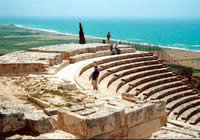|
|
| |
| |
| |
|
| |
 |
| |
|
| uses Google technology and indexes
only and selectively internet - libraries
having books with free public access |
|
 |
|
|
 |
|
| |
|
| |
Previous | |
Next |
|
 |
SIR SAMUEL WHITE BAKER
CYPRUS AS I SAW IT IN 1879
page 357 View PDF version of this page and only demanding rest and time. On the other hand, they might be planted at regular intervals withi so small an outlay that their artificial arrangement! would be advisable.
The cypress may be extended in a similar manner. I
Th e presence of several varieties of oak would naturally suggest the introduction of the cork-tree and the species which produces the valonia, which formsi an important article of trade, and is largely used ini England by the tanner. This cup of the acorn of the Quercus œgilops is extremely rich in tannin, and ranges in price from £20 to £30 per ton delivered in an English port. It is exported largely from the Levant, and there can be little doubt that its introduction to Cyprus would eventually supply a new
source of revenue.
The climate and soil of the Troodos mountains would be highly favourable to the cork-tree,1 which would after thirty or forty years become extremely valuable. The box might be introduced from the mountains of Spain, also the Spanish chestnut, which for building purposes is invaluable, as not only practically imperishable, but fire-proof. It is not generally! known that the wood of the Spanish chestnut is sc| uninflammable that it requires the aid of other fuet to consume it by fire ; it might be used with great] advantage in massive logs for upright pillars, tel support beams of similar wood in warehouses.
Although the walnut cannot be classed with foresti]
trees indigenous to Cyprus, it flourishes abundantly a<
a high elevation, ranging from about 2500 to 5000 fee
1 The cork oak is mentioned in some works on Cyprus as indi] genous to the island ; this is a mistake. The ilex is plentiful, but noi the cork-tree.
View PDF version of this page
|
 |
| |
Previous |
First |
Next |
|
|
|